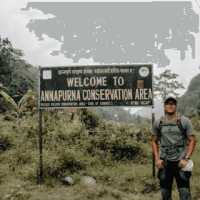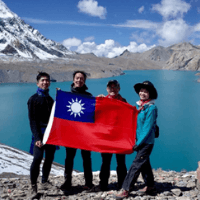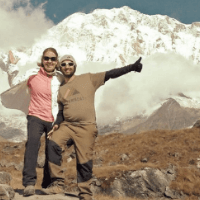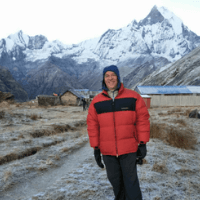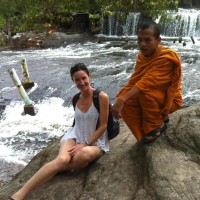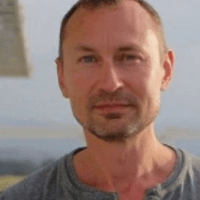What if I arrive early or depart late? Can you arrange extra nights’ lodging? Is there a single-room option?
We would be happy to make any special arrangements such as extra hotel nights or single-room supplements.
What are some basic Nepali customs that I should know about?
- Take off your shoes before entering a temple or one's home.
- Ask for permission before entering a Hindu temple.
- Taking photographs inside most temples is forbidden.
- Nepali people are friendly by nature. Take a genuine interest in them. They are happy to talk to you.
What about tipping?
Tipping for good service is customary for guides and porters, and it’s an important part of their livelihoods. Tips tend to average $15/day for your guide and $10/day for your porter, depending on customer satisfaction.
What extra expenses should I expect?
Normally you should allocate US$5 to $20 per meal in Kathmandu, depending on the meal and the number of drinks. On the trek, US$20 to $30 a day should be enough to buy water, hot showers, chocolates, soda, toilet paper, and other items.
Does your company accept credit cards or Online Payment?
American Express, Visa, and MasterCard are acceptable to our company. If you’re paying in person in Nepal, we recommend you make a payment in cash as the bank charges for credit cards are quite high.
Here is the Secure Credit Card Payment Link: Online Payment.
Could you give us some information about your guides?
Our guides are experienced professionals who have trekked in all areas of Nepal. They’re certified by the Nepal Mountaineering Association, the Ministry of Tourism, and the High Altitude Medical Training Center.
Are your trekking crews insured?
All the crews of Nepali Hiking Trek are insured, including guides, cooks, sherpas, and porters. We ensure that all our staff is well paid, insured, and properly equipped.
What happens if there’s an emergency or extreme altitude sickness?
All of our guides are trained in first aid and can deal with basic ailments that may occur on the trek. In case of an emergency or extreme altitude sickness, you can be helicoptered out, which is why trip insurance is so important. It’s a condition of booking that you are adequately insured for such unforeseen circumstances as these expenses will need to be recovered from your insurance company.
In more frequented regions, there are health posts, which have been established by foreign doctors and many are staffed by overseas personnel
Should I bring food with me?
It’s a good idea to bring power bars, cereal bars, or other high-energy foods. Powder Gatorade is also recommended to fight dehydration
Is safe drinking water available at teahouses?
Yes, bottled mineral water is available for sale everywhere. Alternatively, you can use iodine tablets for use with river water.
Can I charge phones and camera batteries along the trek?
Yes. Most teahouses have charging services available for a modest fee
What about communication while we’re on the trek?
Telephone and WiFi services are available on the major trekking routes in the Everest, Annapurna, and Langtang areas
Who will be part of my trekking team?
You’ll be accompanied by a professional trekking guide and a porter. There will also be a driver contracted to take us to the trek starting point and to pick us up when we’re done.
What about alcoholic beverages?
Beer and whiskey are available at teahouses, especially in the lower elevations of your trek. Alcohol consumption at high elevations is not recommended because it’s dehydrating and reduces the amount of oxygen getting to your brain. The effects of alcohol at high altitudes are said to be triple the level of that experienced at sea level
What kind of meals can I expect during the trip?
You’ll be provided with breakfast, lunch, and dinner every day, ordered off of a menu at our teahouses. Food is plentiful and hearty. The menus include Nepalese, Tibetan, Chinese, Indian, and Western food.
What will a typical trekking day be like?
Normally, we have breakfast at 7 am and start walking at 7:30 or 8 am. We’ll stop for tea around mid-morning, lunch around noon, and probably have another tea stop before arriving at our destination, usually around 3 to 4 pm. There will be tea houses all along the way.
After you get to your overnight stop, you’ll no doubt have a hot drink and biscuits. You’ll also order your dinner in advance, usually chosen from a menu with lots of choices. You’ll then have free time until dinner. After dinner, your guide will discuss the walking plan for the next day.
Will there be an orientation meeting before the trek?
Upon arrival at the hotel, you will have a talk with one of our representatives regarding your trip.
What currencies are acceptable and what about ATMs?
The local currency is the Nepali rupee and there are ATMs in Kathmandu and Pokhara. In those cities, the US dollar and Euros, as well as credit cards, are acceptable in some establishments.
Outside of those cities, and especially in the trekking towns, the Nepali rupee is required.
Why do we need travel insurance?
Travel insurance is not just required, it’s also a great idea considering weather and altitude issues in the Himalayas. Travel insurance covers the cost of trip delays and cancellations, as well as the cost of evacuation in case of extreme altitude sickness or an unlikely accident.
Where do I obtain a visa?
You get your visa on arrival at the airport. Please bring three passport-size photos of yourself to Nepal, one to submit with your visa application, and four others for trekking permits, trekking agreement firm & trekking certificate. The visa, which is good for 30 days, costs $40. You can extend it later if you want.



